Superfamily Muricoidea | Scientific name Murex | |
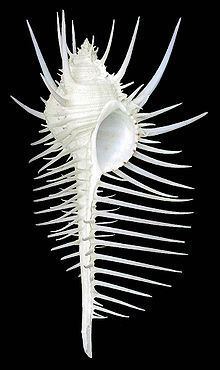 | ||
Lower classifications Venus comb murex, Murex trapa | ||
Murex is a genus of medium to large sized predatory tropical sea snails. These are carnivorous marine gastropod molluscs in the family Muricidae, commonly called "murexes" or "rock snails".
Contents
- Sasaran shoal spiny murex sea shell
- Fossil records
- Distribution
- Habitat
- Shell description
- Human use
- Species
- References
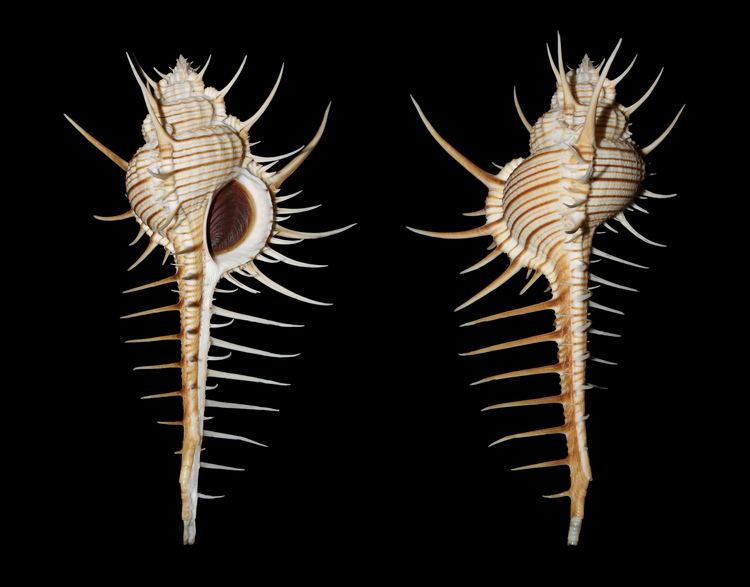
The common name murex is still used for a large number of species in the family Muricidae which were originally given the Latin generic name Murex in the past, but have more recently been regrouped into different newer genera.
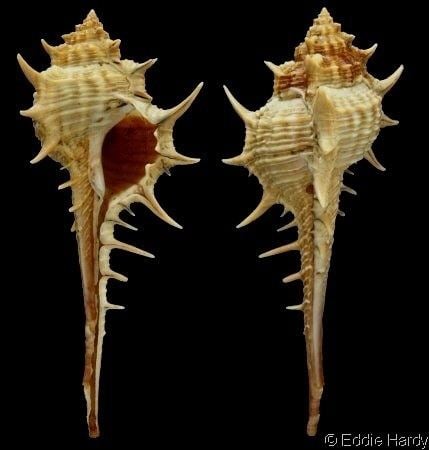
The word murex was used by Aristotle in reference to these kinds of snails, thus making it one of the oldest classical seashell names still in use by the scientific community.
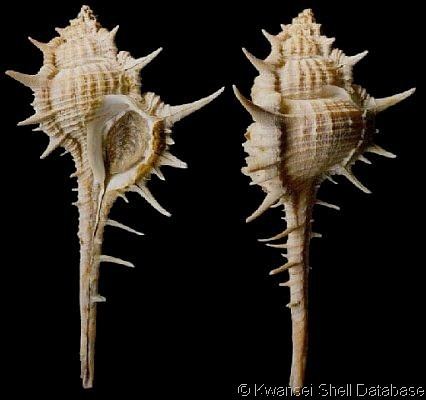
Sasaran shoal spiny murex sea shell
Fossil records
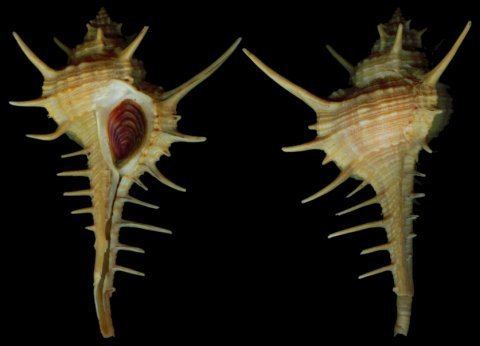
This genus is known in the fossil records from the Cretaceous to the Quaternary (age range: from 125.45 to 0.0 million years ago). Fossils of species within this genus have been found all over the world. There are about 25 extinct species.
Distribution
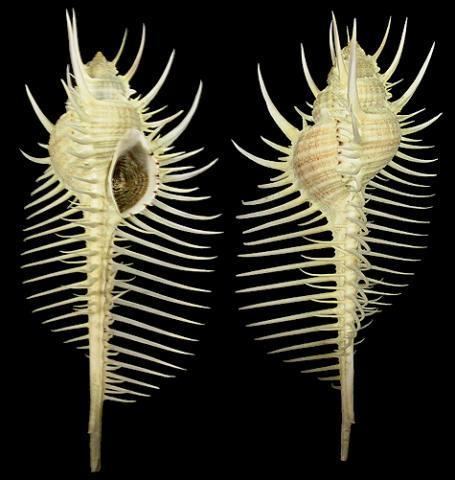
Murex is solely an Indo-Pacific genus, as demonstrated by Ponder & Vokes (1988). The species from the western Atlantic that were formerly considered to belong in the genus Murex are now placed in the genus Haustellum.
Habitat
Most Murex species live in the intertidal or shallow subtidal zone, among rocks and corals.
Shell description
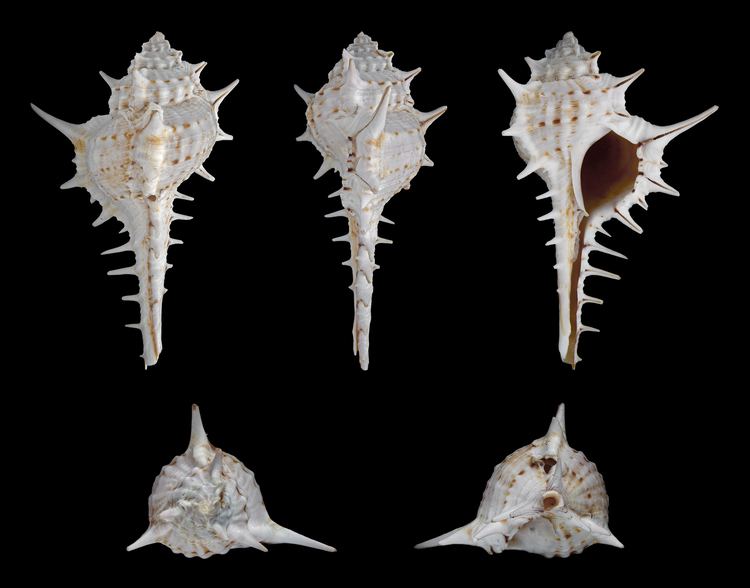
This genus includes many showy members, their elongate shells highly sculptured with spines or fronds. The inner surfaces of their ornate shells are often brightly colored.
Human use
Costly and labor-intensive dyes Tyrian purple (or royal purple) and tekhelet were historically made by the ancient Phoenicians using mucus from the hypobranchial gland of two species commonly referred to as "murex", Murex brandaris and Murex trunculus, which are the older names for Haustellum brandaris (Bolinus brandaris) and the Hexaplex trunculus (Phyllonatus trunculus). This dye is a rare animal-produced organobromine compound, which the snails make using a specific bromoperoxidase enzyme that operates on dissolved bromide in sea water.
This dye was used in royal robes, other kinds of special ceremonial or ritual garments, or garments indicating high rank. It is hypothesised that the dye was the same dye as that which featured prominently in the ancient Temple in Jerusalem, the clothing of the High Priest (or Kohen Gadol) officiating there; it is sometimes still used by Jews today in the ritual fringes (tzitzit) on four-cornered garments. A consensus has yet to be reached regarding the Biblical source of the "blue" dye.
Species
The genus Murex, as originally defined by Linnaeus, encompassed many taxa that are now placed elsewhere in the superfamily Muricoidea. During the 19th century, the definition of Murex was restricted by Lamarck and his contemporaries first to species in the family Muricidae, and then was limited even further to the subfamilies Muricinae and Ocenebrinae. Malacologists of the 19th century including Kiener, Reeve, Küster & Kobelt and Sowerby treated all muricoid forms as belonging to Murex. This is the main reason why Murex has so many Synonyms.
The World Register of Marine Species (WoRMS), lists the following species and subspecies with accepted names within the genus Murex.
